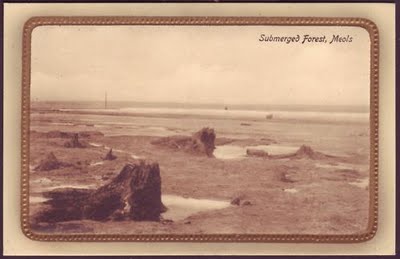Forest transmission
The amount of visual feedback in Katsutoshi Yuasa’s woodcuts reminds me of some research I’m doing now on memory and ideas of oral transmission and lexical feedback in the forest: ‘All of the problems and possibilities of oral thought and transmission are present in the forest’ (Martyn Hudson). In Yuasa’s woodcuts, the techniques of digital and manual processing (the photograph is monochromised by computer, carved from a wooden panel, and then hand printed on paper) leads to a significant level of interference. This is carried also by the titling of his forest works, which persistently follow themes of noise, communication, and illegibility, with print titles including ‘Listen, nature is full of songs and truth’, ‘The world without words’, ‘Made in the conversation’, ‘Slow screaming’, and ‘Quotations from nature’ (while his first major solo exhibition in London was called Echoes from Nature).
Within this idea of “taking dictation” from the forest, the texts which I deal with in my thesis are also transcriptive responses to modern forestry and its levels of digital and lexical signification. As Craig Dworkin writes in Reading the Illegible, of the ‘medial noise’ in Susan Howe’s forest poems, ‘As in any system, however, noise proliferates hand in hand with an increase in the terms of communication’.
Some other upcoming news for interested parties: the Finnish artist Eija-Liisa Ahtila is speaking next week at Whitechapel art gallery about spruce trees and experimental cinema, particularly in her films The Horizontal, The House, and Hour of Prayer. The Invisible College are hosting an audio drift in their Kilmahew woods site on the 23rd March (with its ruined St. Peter’s seminary), created from oral histories of the woods by Michael Gallagher, a Glasgow researcher in audio media, telephony, and landscape. There is an account of the recently finished Montreal exhibition ‘First, the forests’ online here: this used archival and new materials to curate a synthetic view of the complex and larger phenomenon of forestry and nature (in four categories: Bureaucratic Forestry, Scientific Forestry, Tropical Forestry, and Economic Forestry).
Finally, I have written several translations of Basho’s haiku on the bee and the peony, which, along with many others, will be incorporated in Alec Finlay’s project at the National Fruit Collection in Brogdale, to celebrate cherry blossom season. The site – where each poem will be handwritten on a label alongside its translation, in orange and black, and tied to a cherry tree – will be attracting visitors over the next few months (see their Hanami season page here), and some of the versions will be published on Alec’s bee bole blog.
Having begun this post with degraded images of forests, I thought I would also finish by including some antique photographs of submerged / antediluvian forest which I’ve been coming across, whilst working on the rhetoric of arboreal records:







Wonderful old images, Amy. I actually had an ‘aunt’ we used to visit when I was young in Hoylake. I lived in Lancashire then, not far away. I know there are submerged forests on beaches on the South Wales coast too. I must try to go to Brogdale for the blossom and haiku. I have been before but only in the autumn apple season. Your research is bringing up all sorts of interesting items!
Fascinating post and love the woodcuts. Good to have discovered your blog.
Great post Amy. I’m a forester and many of us react against the reduction of forest meaning to utilitarian scientific management. Art is essential to building the relationships we have with place – landscapes and socialscapes. I wonder whether you know the work of Cathy Fitzgerald http://ecoartfilm.com/
Chris Perley chrisperleyblog.wordpress.com
[…] which imagine the city’s infrastructures dictated by log harvests and timber engineers. Like Katsutoshi Yuasa’s prints, these are created by a hybrid of digital and analogue techniques (pen and ink / scanning and […]